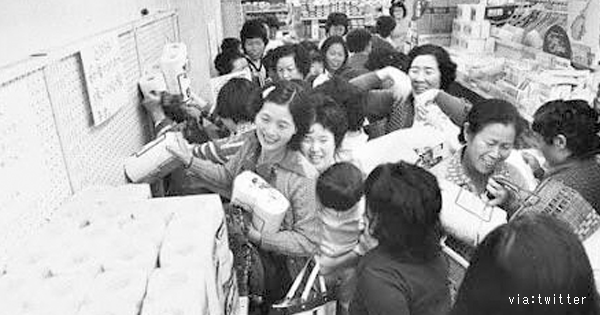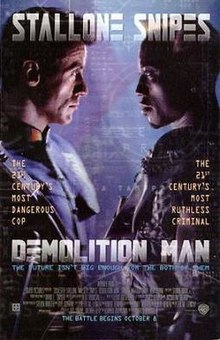Update: 3 May 2021. A revised version of this post has been published in Anthropology Now.
We are still only in March, but it’s already evident what will define 2020 for a significant portion of the world. Not the Australian fires, Trump’s impeachment, or perhaps even his re-election. It will be COVID-19.
Since it was first detected in China, the disease has spread with alarming speed, resulting in a worldwide panic. But while COVID has caused much fear, confusion, and anxiety, it has inspired little bemusement. Except for what it has done to toilet paper.
Across the internet, there are photos and videos of store shelves emptied of toilet paper by harried customers. The shelves are empty not just in the places where COVID has become established, but also here in New Zealand, where it has yet to have a material impact on the day to day lives of most.
There has been an overnight explosion of memes ridiculing the irrationality of toilet paper hoarders, and blog posts (including the one you’re reading) addressing the strangeness of the phenomenon. To be sure, toilet paper is not the only item that is in short supply. Surgical masks and alcohol-based hand sanitizers are also difficult to find. But a run on those items is understandable. For toilet paper, it is less so.
What is the meaning, then, behind this flurry of attention, talk, meme-ing, writing, and photographing focused on toilet paper? There has been much (repetitive) focus on the psychology of hoarding toilet paper, but little of it addresses the basic question, why toilet paper?
It turns out that toilet paper has many layers to it. Some have to do with the symbolic meanings that modern societies (or at least their Western versions) have assigned to it. Others have to do with the political and psychological security that toilet paper gives us. And of course, toilet paper is very useful. If we put these layers together, then we start to see some reasons that toilet paper should become what the anthropologist Sherry Ortner once called a “key symbol.” So, how has toilet paper become so central for people during a moment of profound uncertainty? Let’s begin with its history. This is not the first time that people have panicked over TP.
A History of Hoarding
Because COVID-19 originated in China, it should not be surprising to learn that the current toilet paper panic also first erupted in East Asia. (This graph of Google search trends show a spike in searches for “toilet paper” in Japanese, followed by one for searches in English.) The panic seems to have begun in mid-February in Hong Kong, triggered by social media rumors that imports from China were about to collapse. The phenomenon then spread to Japan by the end of February, despite the fact that Japan imports a miniscule amount of its supply from China. Alongside rumors of toilet paper supply constraints, social media also spread the idea that toilet paper and surgical masks were made of the same materials, further fanning fears of shortages. From there, panic buying spread to Australia, and then to the other parts of the English-speaking world.
There are good historical reasons for the toilet paper shock to have taken its initial hold in Asia as well. In her book Waste: Consuming Postwar Japan, historian Eiko Maruko Siniawer discusses an infamous incident that took place in Japan in the early 1970s.

During the Oil Shock in October 1973, rumors began to spread around homes in Osaka that toilet paper was about to shoot up in price. The story was taken up by the mass media, and by November 1st, lines of hundreds of housewives had formed outside of supermarkets in the area. A few days later, the panic hit the Tokyo area. In Yokohama, one thousand housewives waited for two hours before one shop opened to buy up five hundred packages within fifteen minutes of opening.
Like the current panic, there was actually no impending shortage of toilet paper, though shops struggled to keep the item on their shelves. Siniawer points out that the panic-buying customers were generally women from firmly middle-class homes who had the time to wait in line and the space to store their stockpiles. They were emblematic, she argues, of a culture in which “the ability to consume, and the desire for cleanliness, comfort, and convenience, had taken root.” (Siniawer 2018, 110) The thought that toilet paper might run out constituted a fundamental threat to the newly emergent consumer class in Japan.
Whereas the 1973 incident was localized to Japan, the more rapid and transnational movement of information today seems to have turned toilet paper hoarding into a global phenomenon. The current incident also shows that at least some of the culture of cleanliness, convenience, comfort, and consumption of 1970s Japan is now firmly in place in many countries around the world.
This historical and cultural explanation is only one layer of the puzzle of toilet paper. To understand more, we will need to examine toilet paper’s utility.
The Hierarchy of Paper
Within any home, there is a large quantity and variety of paper. Konmari notwithstanding, many homes are likely to have a book or two, and perhaps many more. Some may be highly valued, like religious texts. There may also be secret diaries, children’s drawings, and old letters from friends and lovers.
These kinds of papers are at the top of the hierarchy of paper in the home. They are generally valued for their semiotic content, the writing or images inscribed on them, which are often unique (at least within one home.) The paper will also tend to be of heavier weight, and come in some kind of packaging, like book covers, picture frames, or envelopes, to protect what is inside and heighten the tactile and/or visual contrast of the paper from its surroundings.
Below this sacred domain is the level of paper that derives part of its value from its inscriptions, but can also become as valued for their material properties. In this category are things like pulp fiction novels, newspaper or old magazines, which derive their initial value from their inscriptions, but can easily transform into scrap paper, kindling, or lining of a hamster cage.
Going further down the ladder, we find fancy dinner napkins, disposable plates and cups, coffee filters, paper towels, facial tissues, and, at the bottom of the bottom, toilet paper. These papers are created to be soiled. They may enter the home spotless, but this is only a temporary state. Eventually, they will all be marked by a kiss that confirms their fate as waste. And among them, only toilet paper has the dubious honour of dealing with our shit.
Toilet paper’s position at the very bottom of this hierarchy tells us about one layer of its centrality. Because toilet paper derives practically none of its value from inscriptions, its most common and economical form is the blankest of blank slates. It can thus serve a very useful cleaning function, but it can also perform many of the functions of the other types of paper up the chain. It can be used to wipe kitchen surfaces and children’s noses, start fires (with caution), and carry scribbled reminders. (I have not yet drunk from toilet paper, but will admit to eating a Nanaimo bar off of some.)
Its material versatility and position at the bottom of the hierarchy of household paper make it an important foundation of a normative home life. The loss of that foundation can therefore present certain practical challenges. In a pinch, I can scribble a note on toilet paper, but leaves from a notebook substituting for toilet paper would only result in a big mess.
This material versatility comes paired with a semiotic versatility—its capacity to carry meaningful signs—that can allow toilet paper to move into other categories in the hierarchy of paper. Toilet paper can even rise to the realm of the sacred. In a pivotal scene in the 2005 film V for Vendetta, Natalie Portman’s character, Evey, has been thrown into a cell, out of which she is taken only to be tortured. Seemingly imprisoned by a totalitarian regime, she has lost everything that made her who she was.

Lying on the cold floor, she discovers some toilet paper jammed into the wall, and finds a letter written by the previous occupant of the cell. Reading this letter makes Evey aware of the very foundation of her own humanity that cannot be taken from her, and she is reborn without any fear of the regime. From this point, Evey becomes the person she needs to be in order to start a revolution. In effect, toilet paper was the founding document for a new society. It can do this because if it can take our shit, then it can do almost anything.
The same does not quite hold true for paper from the top of the hierarchy. One cannot take a Bible and use it to clean yourself in order to make it toilet paper. It remains a Bible, but one that has been defiled. This means that toilet paper may have a foundational function to modern society that goes beyond even a written constitution. While we may use fancy paper and pens to write the basic laws of a nation, in some way those words have no meaning unless they could also be written on toilet paper and potentially carry the same force. Without the possibility of a constitution written on Charmin, modern democracy would be unthinkable.
Interestingly, while putting poop on a Bible does not transform it into toilet paper, it is possible to turn it into crap by contaminating it with the wrong words. Hence the endless debates over Biblical translation and interpretation. The appearance of a bad word threatens the integrity of the whole. A more vivid example of this phenomenon appears in the 1990s blockbuster action movie Demolition Man.
Sylvester Stallone (portraying a plays-by-his-own-rules LA cop named John Spartan) wakes from a long cryosleep in a strangely clean and orderly future version of Los Angeles, called “San Angeles.” He has been reactivated by the future police to capture Wesley Snipes, acting as Simon Phoenix. Phoenix is a criminal mastermind from Spartan’s own time who has somehow escaped and gone on a rampage in a city that has little experience with violence, having pushed its criminals (and the poor) far underground.
A running joke in this film has to do with the “three seashells.” After waking, Spartan is taken to the police station to receive a briefing on Phoenix. At one point, Spartan returns from the toilet and tells his new colleagues that they’re out of toilet paper, which meets with giggles from Rob Schneider’s desk cop: “He doesn’t know how to use the three seashells!” The whole time, their discussion has been monitored by a device on the wall that listens for vulgar language and issues an immediate fine and a ticket to the offending speaker. Spartan smoothly walks over to the wall and starts spouting a series of obscenities, collecting each ticket as it comes out. After having accumulated a bundle of paper, he returns to the toilet to finish his business. Spartan’s dirty language has turned papers that are supposed to be backed by the power of the state into “mere” toilet paper.
It would be an exaggeration to say that the people hoarding toilet paper in 2020 are doing so to safeguard democracy. But it is less of a stretch to say that the sudden disappearance of toilet paper from stores shakes their sense of security. As I’ve discussed, there are certain practical difficulties that arise from the absence of toilet paper that are more urgent than for other forms of paper. Moreover, paper’s material versatility has its complement in a significant semiotic versatility. If toilet paper can carry poop away from me, then it can carry practically any other message I could possibly imagine.
Symbols and Rites of Passage
Another layer of toilet paper relates more specifically to its symbolism. No anthropologist can look at poop without thinking of Mary Douglas. This is not a comment on Douglas herself, but on the influence of her work on symbols, particularly those pertaining to ideas of purity and pollution (1984). She wrote, famously, that dirt is “matter out of place”, and that “where there is dirt, there is system.” (Douglas 1984, 36) What she means is this: dirt and pollution are only perceived as such in relation to cultural systems of classification. People have cultural knowledge that sorts the things in the world into different categories. This is how we understand them and their relationships with each other. When we fail to fit something into a category, we perceive it as out of place, and we experience its out-of-placeness as dirtiness. This leads people to a number of possible responses to deal with that dirt and try to maintain the stability of their categories. This is linked to one of Douglas’s most important insights: the beliefs that people hold about dirtiness and, more broadly, pollution, can express “general views of the social order.” (3) This confirms what we’ve been discussing so far about the relationship of toilet paper to security.
Dirtiness, however, is relative. In her example, shoes are not inherently dirty, but it is dirty to place them on the dining-table. And so our ideas of dirtiness and cleanliness make up a complex system of relationships among objects or behaviors, the systems that we use to categorize them, and the situations in which we encounter them. Even feces is not always dirty: the anthropologist Gananath Obeysekere mentions in Medusa’s Hair, that feces can become gold for some South Asian ascetics (1984, 35). (Incidentally, Obeysekere mentions Freud as also suggesting a link between feces and gold, which Freud makes in the essay responsible for associating the “anal” with a propensity for cleanliness and orderliness.)
Toilet paper is similarly variable in its cleanliness and dirtiness. In most cases, it comes to hand in a clean state and leaves in a dirty one. Its primary purpose, then, is to mediate between the clean and the dirty. It removes the dirtiest of dirts from our bodies so as to return it to order. We value toilet paper so highly because we sacrifice its cleanliness each day to ensure our own. In Victor Turner’s words, it is “liminal” or “transitional” (1967). Toilet paper is like a symbolic membrane across which we propel our waste, so that we can maintain our social personae.
The connection to Turner suggests a further symbolic, or rather ritual dimension to toilet paper. There are many kinds of rituals, but nearly all of them are socially conservative. In other words, they work on the people who participate in them in such a way so as to maintain and strengthen the social structures of which they are a part. One of the important functions of Sunday Service at a church, for instance, is to re-affirm the relationships between the priest, the parishioners, and God.
A trip to the toilet can be viewed as such a ritual. Rooms containing toilets are usually marked off from other spaces and hidden in some way. In public toilets, people are often further shielded from one another in smaller private compartments. In order to enter such a room, people will often leave certain things outside, particularly food or drink. These are types of social and physical boundaries that demarcate the spaces where rituals take place.
Many people will recoil at the thought of a dirty toilet and insist on clean facilities, but in actuality the entire room is usually experienced as both. Some parts are perceived as dirtier than others: the floor and the toilet itself fall on the “dirty” end of the spectrum, while the sinks, towels, and buttons on air dryers fall on the “clean” (or at least “cleaner”) end. This mix of clean and dirty makes the whole space ambiguous, another common feature of ritual spaces.
We also momentarily suspend our ordinary social identities. Restroom conversations may be frequent, but many people will be put off if you use such places to try and make new friends. We only allow relatively secure social relationships to exist within them. For similar reasons, we may hesitate to answer the phone. If, as descendants of Descartes are said to do, people distinguish their minds from their matter, their social from their biological selves, and tend only to display their minds and social selves in public, then the bathroom, where some of the most unavoidably biological things happen, becomes a place where social relations can easily become threatened, and so we try to keep them outside.
Some relationships may form inside restrooms, but they are usually momentary ones that are meant to persist only within. A good example comes from the classic American sitcom Seinfeld. The character of Elaine Benes (Julia Louis Dreyfus) finds herself in a public bathroom stall that has run out of toilet paper. She begs her stall-neighbor to spare a few squares, but is refused. The comedy comes from the realization that this selfish neighbor is another character’s girlfriend, who turns out to be a paper hoarder. Elaine becomes obsessed with taking revenge on the stall-neighbor.

If things had initially proceeded as Elaine had hoped, some paper would have been passed over without any further comment, and both could finish their business in peace. That the TP hoarder not only refused but also turned out to be someone that Elaine would encounter again outside of the restroom completes the set up for the rest of the joke.
This momentary interaction points towards the sacred communion that often occurs in liminal spaces. Stripped of their usual social identities, temporary inhabitants of the toilet can encounter each other as bare selves. Thus, something that is exchanged as a commodity outside of the bathroom can be offered inside to another as a pure gift. When this gift is not forthcoming, the fight can spill outside the walls and threaten ordinary social life. In this case, Elaine has her revenge, ruining Jerry Seinfeld’s relationship in the process.
We can therefore view a trip to the bathroom as a ritual in these terms: when our biological functions assert themselves (i.e. when “nature calls”), we enter an ambiguous space in which they can be exercised without threatening our ordinary social selves. Inside, we satisfy our biological needs, and cleanse ourselves before leaving the space, readying us to rejoin the social world. (In this clip from The Pervert’s Guide to Cinema, Slavoj Zizek discusses the psychic horror of a toilet that overflows its liminal space.)

Within this ritual, toilet paper becomes something of a magical object, like a talisman one holds for protection while crossing treacherous terrain. We find it already inside a space of ambiguity, and with it, we can safely find a way to return to the outside world. It allows us to momentarily acknowledge our own biology, but once acknowledged we release it like a handkerchief on the wind chasing a departing ship: we leave it behind, so that we can finally go home.
The Bottom
The symbolic importance of toilet paper therefore runs deep into the soul of modern culture. It is perhaps because we somehow recognize this importance that the mere thought of the disappearance of toilet paper from the world spurs some of us to act so quickly and decisively to secure our own supplies.
Toilet paper embodies security. It has a past that places it right in the middle of modern consumer culture. It sustains our homes: as long as we have toilet paper, the hierarchy of household paper can persist, and the many needs that it represents can continue to be fulfilled. It also gives us a basic sense of political security. Toilet paper’s existence guarantees the possibility of written law. And finally, it embodies a Cartesian separation of mind from matter, and it is necessary for the symbolic and ritual work that ensures the stability of the social and natural orders. It is these layers together that give toilet paper the strength it has to stand at the center of society. Therefore this run on toilet paper should not surprise us. In fact, we should expect such runs to occur any time the denizens of modern societies perceive an existential threat to their everyday routines. In these runs we can see the flow of the history of the world.
Book References
Douglas, Mary. 1984. Purity and Danger: An Analysis of Concepts of Pollution and Taboo. New York: Routledge.
Obeyesekere, Gananath. 1981. Medusa’s Hair: An Essay on Personal Symbols and Religious Experience. Chicago and London: The University of Chicago Press.
Siniawer, Eiko Maruko. 2018. Waste: Consuming Postwar Japan. Ithaca: Cornell University Press.
Turner, V. W. 1967. The Forest of Symbols: Aspects of Ndembu Ritual. Cornell University Press.

[…] Come scrive lo studioso Grant Jun Otsuki, antropologo culturale dell’università Victoria di Wellington in Nuova Zelanda, la carta igienica ha molti strati simbolici. […]
I got about half way through before spinning off into ‘what’s he on about’ land. I agree completely that the reliance on toilet paper is a middle class phenomenon in a world where they no longer have servants and where death and putrefaction are hidden from their day to day lives. I am old enough to remember that the daily red top was purchased more for its utility on the toilet at the end of the garden (and maybe the football results) than any desire for ‘the news’: my American friends remind me that the Sears Catalog was a common source of toilet tissue and if you have never experienced the joys of Bronco you would understand why the leaves of a book, any book, were preferable; and that ‘soft as your puppy’ paper really is a VERY recent phenomenon (1970s). Ignoring the real history of anal hygiene meant that your essay was derailed early in its journey toward oblivion.
Hi!
this is a beautiful text, really.
I would like to ask your permission to translate it and upload it to my blog.
regards,Gustavo.
That would be nice. Would you be able to get in touch with me by e-mail? You can find my contact information here: https://www.gjotsuki.net/contact/